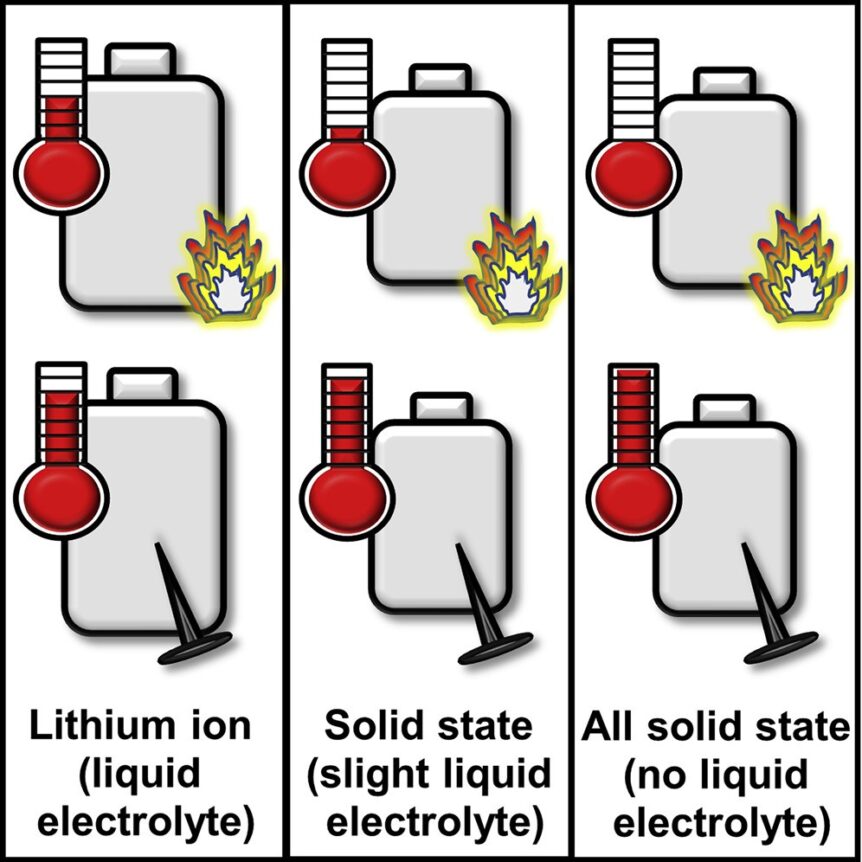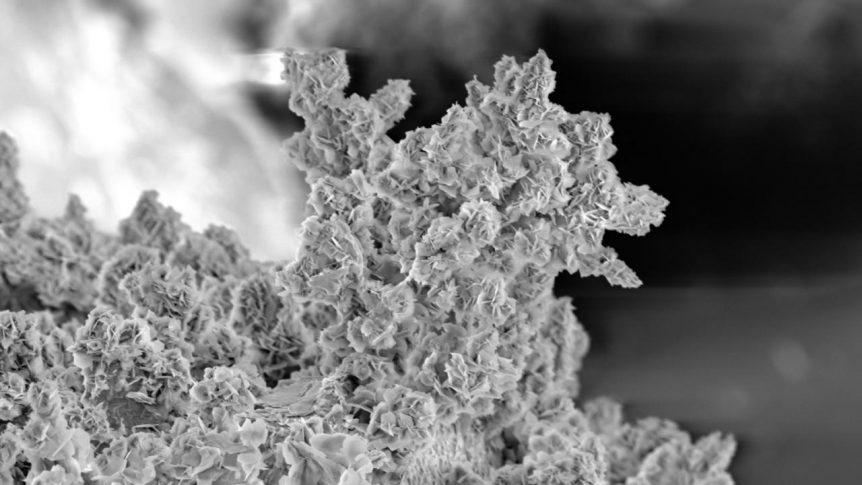What if our assumptions prove wrong? How willing are we to at least examine closely-held beliefs and accept a new, scientific finding? Sandia engineers are demonstrating that solid-state batteries containing a little liquid electrolyte can be safer than conventional lithium-ion cells. PV Buzz included a great executive summary in their article on the findings: A new study tackled a long-held assumption that adding some liquid electrolyte to improve performance would make solid-state batteries unsafe. Instead, the research team found that in many cases solid-state batteries with a little liquid electrolyte were safer than their lithium-ion counterparts. They also found, if the battery were to short-circuit, releasing all its stored energy, the theoretically super-safe, all-solid-state battery could put out a dangerous amount of heat. Those three points seem to contradict the conventional wisdom that eliminating electrolytes would lead to safer, less flammable batteries. Sandia engineers Alex Bates and John Hewson have published findings challenging that conventional wisdom in the peer-reviewed journal …
Defeating Dendrites – Going with the Flow
One thing stalling battery development, dendrites, may have met their match if University of California at Davis researchers have their way. Jiandi Wan’s research group allowed ions to flow through a microfluidic channel near a battery’s cathode to prevent dendrite growth. According the group’s paper, this, “…can potentially expand the safety and lifespans of these next-generation rechargeable batteries.” Their research may lead to safe lithium metal batteries, promising higher power and energy densities, but also struggling with safety issues. Lithium metal batteries might potentially produce twice the energy of lithium-ion batteries, but have greater risks because of the growth of tree-like dendrites on the cathode. An article in PV Buzz explains, “When they charge, some ions are reduced to lithium metal at the cathode surface and form irregular, tree-like microstructures known as dendrites, which can eventually cause a short circuit or even an explosion.” Associate professor Jiandi Wan’s paper in Science Advances explains the problem and the fix. His Department …


